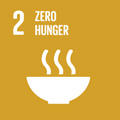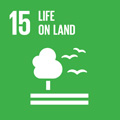- Docente: Claudio Marzadori
- Credits: 6
- SSD: AGR/13
- Language: Italian
- Moduli: Martina Mazzon (Modulo Mod 1) Claudio Marzadori (Modulo Mod 2)
- Teaching Mode: Traditional lectures (Modulo Mod 1) Traditional lectures (Modulo Mod 2)
- Campus: Bologna
- Corso: Second cycle degree programme (LM) in Plant and Agricultural Biotechnology (cod. 5948)
-
from Feb 18, 2025 to Apr 10, 2025
-
from Apr 01, 2025 to May 22, 2025
Learning outcomes
At the end of the course the student knows the chemical and biochemical processes that regulate the soil-plant interaction; he is able to understand, at the molecular level, the mechanisms that regulate the activity of the soil surfaces, of the soil-plant interfaceroot, the processes that govern the radical absorption of the elements, the processes that regulate the mobility of nutrients from the colloidal surfaces of the soil through the simplasto and apoplasto.
Course contents
BIOCHEMISTRY OF SOIL-PLANT INTERACTION
(Master's Degree in Plant Agricultural Biotechnology)
MODULE 1. SOIL BIOCHEMISTRY (30 hours – Dott.ssa Martina Mazzon)
1.1 Soil constituents (4 hours)
Mineral constituents (minerals, silicates, phyllosilicate structure, oxides and hydroxides, carbonates).
Organic constituents: organic matter, classification and outline of transformation and stabilization processes.
1.2 Physical and chemical properties of the soil (4 hours)
Surface properties (specific surface area and origin of charges), adsorption and ion exchange.
Soil reaction: definition of soil pH, active and exchangeable acidity, soil classification based on pH, pH and nutrients.
1.3 The microbial component (12 hours)
Microorganisms in soil: microbial biomass and microbiome-plant interactions, activity, respiration and microbial-functional indices
Soil enzymes: definition, classification, localization and enzymatic catalysis.
Enzymes involved in the carbon, nitrogen and phosphorus cycles: definition of the main enzymatic activities and their interpretation.
Enzymes as indicators of soil quality: environmental factors, enzymes and detoxification, determination and interpretation of related indices.
1.4 Analytical procedures and interpretation of results (10 hours)
Analytical methods for the determination of: soil reaction (pH), total limestone, carbon and nitrogen (extractable and microbial), available phosphorus, enzymatic activities.
Case study: statistical analysis of a dataset representing a case study and draft a final report.
MODULE 2. SOIL-PLANT INTERACTION (30 HOURS – Prof. Claudio Marzadori)
2.1 Nutrients and short distance transport (6 hours)
Soil fertility and the threats that undermine it
The essential nutrients in soil and the concept of NUE
Mechanisms of short-distance radical transport and absorption: biochemical and molecular aspects
2.2 Availability and mobility of nutrients in the soil (8 hours)
Chemical properties of soil and factors affecting nutrients mobility
Main transport mechanisms of nutrients in the Bulk Soil and in the rhizosphere
Radical strategies to increase the absorption of elements that are not very mobile
Introduction to the concept of rhizosphere
2.3 Rhizo-depositions and chemical properties of the rhizosphere (8 hours)
Definition of rhizosphere
Rhizodepositions: qualitative and quantitative aspects
Effects of rhizodepositions on rhizosphere formation
Chemical properties of the rhizosphere, regulation of rhizospheric pH and ion mobility in the rhizosphere
Management of rhizosphere properties and nutrients availability
2.4 The fundamental nutrients (8 hours)
The nitrogen cycle in the soil and root uptake: biochemical and molecular aspects
Soil phosphate and root uptake of phosphate: biochemical and molecular aspects
Soil iron and iron uptake strategies: biochemical and molecular aspects
Readings/Bibliography
Slides of the lessons that will be uploaded at the beginning of the course and materials provided by the teachers
Teaching methods
lectures and laboratory activity
Assessment methods
Oral examination held by the two teachers holding the modules. During the interviews questions will be asked about the program held in the classroom.
Teaching tools
Slides provided by the teachers and teaching laboratories present at the teaching site
Office hours
See the website of Claudio Marzadori
See the website of Martina Mazzon
SDGs




This teaching activity contributes to the achievement of the Sustainable Development Goals of the UN 2030 Agenda.
